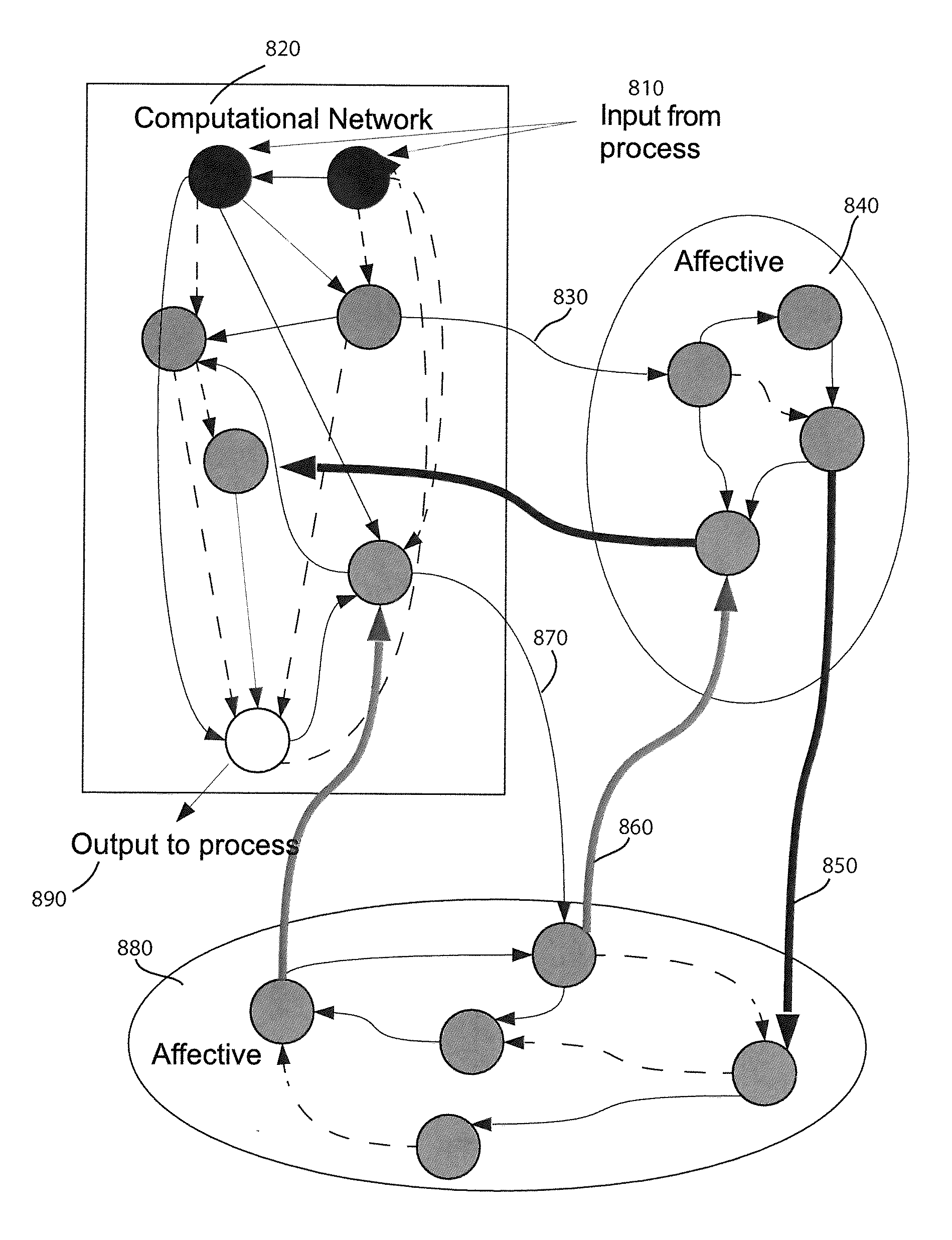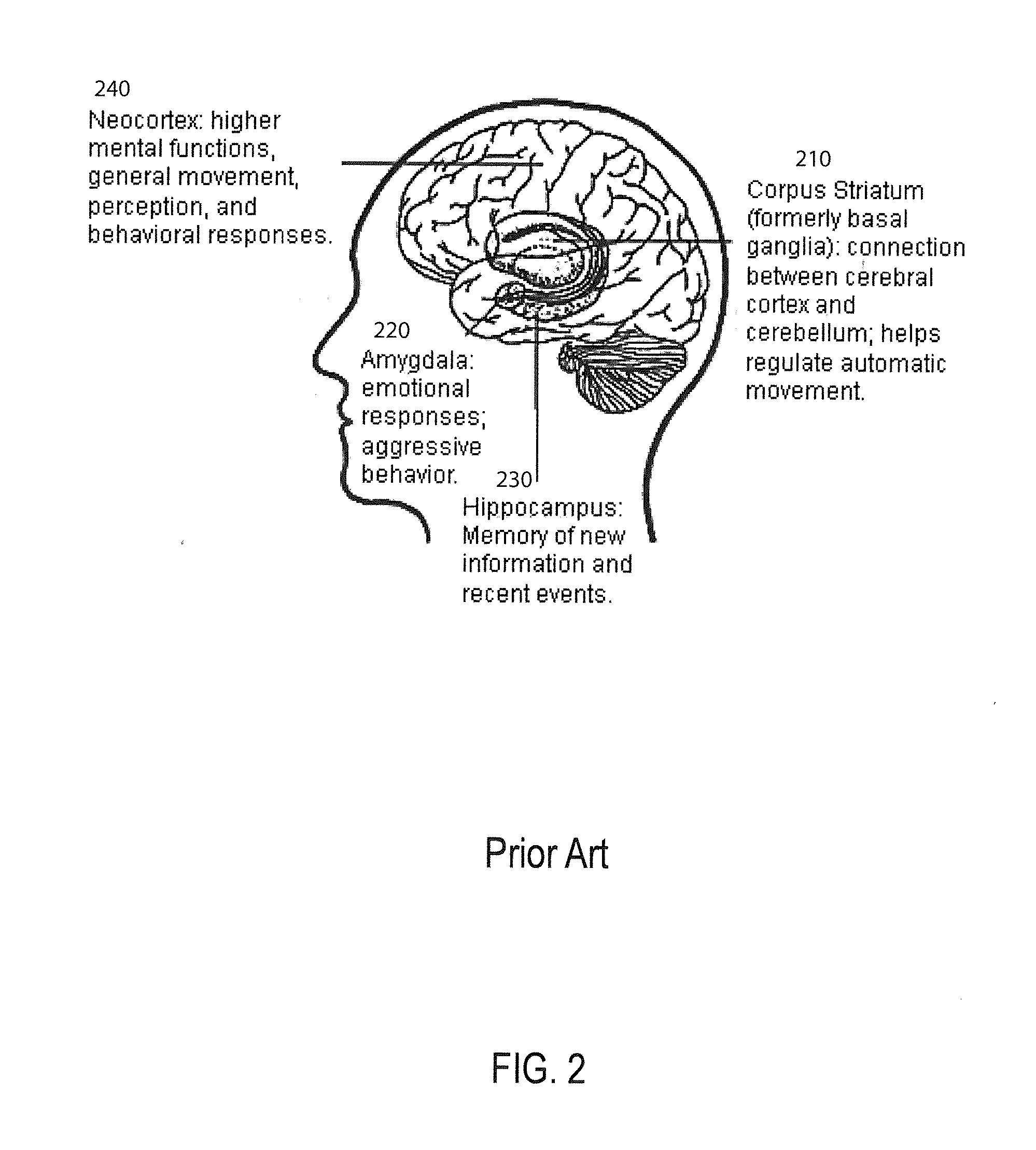Method and apparatus for constructing a neuroscience-inspired artificial neural network
a neural network and artificial neural technology, applied in adaptive control, biological models, instruments, etc., can solve problems such as inability to solve the problem of generating errors, neuron firing, and inability to have a stable solution
- Summary
- Abstract
- Description
- Claims
- Application Information
AI Technical Summary
Benefits of technology
Problems solved by technology
Method used
Image
Examples
Embodiment Construction
[0079]In accordance with an embodiment of a method and apparatus for constructing a neuroscience-inspired artificial neural network that overcomes the deficiencies of the prior art, the embodiment exhibits five characteristics which differentiate over the prior art. Firstly, it is desirable that a neural network structure evolve over time. Evolution over time means that the learning algorithms of the prior art may not evolve in accordance with data (events) received at input neurons compared with the evolution achieved in accordance with the present invention and the present learning algorithms disclosed herein. The events may comprise spikes, the events (spikes) defined by a time and optionally a weight. Secondly, it is desirable that neural networks may be embedded into a geometric space. This characteristic suggests that the present invention seeks confinement, for example, to a geometric space in a similar manner that it is believed that the human brain and its sensory inputs an...
PUM
 Login to View More
Login to View More Abstract
Description
Claims
Application Information
 Login to View More
Login to View More - R&D
- Intellectual Property
- Life Sciences
- Materials
- Tech Scout
- Unparalleled Data Quality
- Higher Quality Content
- 60% Fewer Hallucinations
Browse by: Latest US Patents, China's latest patents, Technical Efficacy Thesaurus, Application Domain, Technology Topic, Popular Technical Reports.
© 2025 PatSnap. All rights reserved.Legal|Privacy policy|Modern Slavery Act Transparency Statement|Sitemap|About US| Contact US: help@patsnap.com



